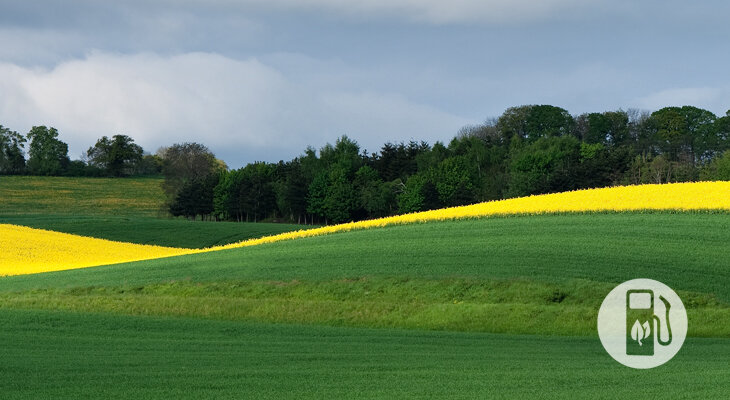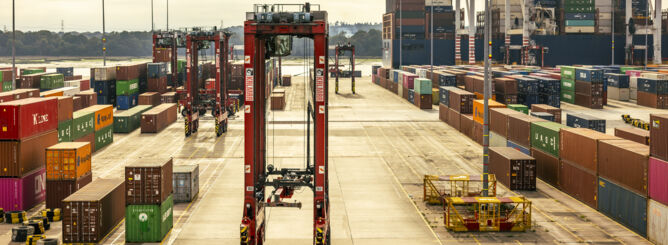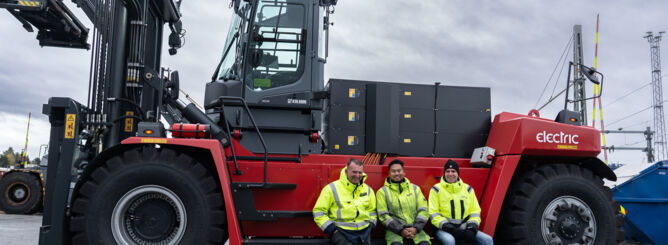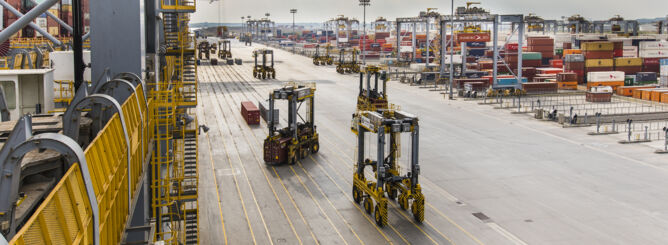The current state and future of green energy alternatives for diesel powertrains
As it becomes increasingly important for businesses of all shapes and sizes to consider their environmental impact, “going green” is a term that we hear a lot of. What that entails, exactly, largely depends on the industry and the company’s own processes. But when it comes to reducing emissions and improving cost efficiency at the same time, there is perhaps one key aspect that many sectors should consider first – and that’s the source of energy, often fuel.
Reducing costs and lowering emissions
In the cargo handling industry, the majority of vehicles still run on diesel. As technologies improve, newer, greener energy alternatives emerge. Such alternatives are beneficial not only for the planet at large, but could also offer ways to improve efficiency and reduce cost, depending on a business’ operational needs. The good news is, exploring greener energy alternatives is not something you have to wait for. The question is, what options exist today, and what alternatives should we look out for in the future?
Electric
The technology to power a drivetrain with an electric battery has reached a level of maturity. It’s efficient and reduces CO2 emissions – benefits that the cargo handling industry has started to enjoy.
Electricity as an alternative source of energy is nothing new, as Lasse Eriksson, Head of Green Technologies at Kalmar, points out. “It has come through the whole Kalmar offering. The first Kalmar forklift trucks have been electric since the 1980s.” While jobsite processes need some adjustment to accommodate charging breaks, many battery-electric vehicles, like the electric-powered heavy forklifts in operation at NorSea Norway, run full shifts without frequent charging. The technology is well enough developed that battery-electric machines can often work the same shifts as their diesel counterparts.
Adopting electric power on your job site requires the necessary infrastructure, the installation of which requires time and investment. But given the maturity of the technology, its CO2 reduction and cost effectiveness, it’s an investment worth making.
Hydrogen
In the cargo handling industry, fuel cells that convert hydrogen to electricity onboard the vehicle have already been in use for many years, predominantly in small forklifts. They do not produce exhaust emissions, making them ideal for indoor use. However, not all hydrogen is green hydrogen – the difference lies in how it’s produced.
“Green hydrogen” fuel is, theoretically, 100% carbon neutral. As long as the hydrogen is produced by electrolysis using renewable power sources, then no emissions are created during its production. The reality is, we’re not quite there yet. About 98% of today’s global hydrogen production is still based on fossil fuels. Of that amount, 76% is produced using natural gas, 23% using coal, and 1% is from oil products.
The global hydrogen economy is expected to grow massively over the next decades. But this isn’t a sure thing. To take off, green hydrogen technology needs to achieve cost-competitiveness with fossil-based alternatives before 2030. Furthermore, the willingness to develop a suitable infrastructure will be largely shaped by global supply and demand – different countries have different opportunities for importing and exporting hydrogen, so it’s difficult to make forecasts on a global scale.
Vegetable oil
Hydrotreated Vegetable Oil – or “HVO100” – is a fuel made from 100% renewable, sustainably sourced vegetable and animal matter. As HVO100 has a chemical structure similar to diesel fuel, HVO can be easily substituted for diesel without any impact on the efficiency of the equipment – and can reduce emissions by up to 90%.
HVO is widely considered the best paraffinic option available to instantly help reduce carbon emissions. In fact, a number of Kalmar machines are already HVO-compatible, like Kalmar Straddle Carriers fitted with Volvo or Agco engines. They can use HVO100 without any alterations. Kalmar Stage 3, 4 and 5 reachstackers, forklifts, terminal tractors and empty container handlers fitted with Volvo or Cummins engines are now certified to use HVO100.
Owners of a certified machine can reach out to the Kalmar support team to find out if the equipment needs a minor upgrade before using HVO. A full list of certified Kalmar equipment that can use HVO100 fuel is available here.
HVO is currently available in a limited number of markets globally. But, given that it’s made from 100% renewable material and has the potential to lower emissions by up to 90%, we’re hopeful for an increase in the global adoption of HVO100.
Green going forward
The future looks bright for green energy alternatives, but a number of key questions remain open. Can hydrogen fuel cells be scaled economically to heavy equipment in the container handling industry? Will HVO fuel become more readily available in more markets worldwide? We can’t foresee the future, but when it comes to the development of green energy alternatives, Kalmar is actively searching for new ways to help your business reduce carbon emissions whether it’s with technology, digital solutions or services.
In our R&D, AI and data will play a key role. “There are so many opportunities to use digitalisation, data analytics and AI to support machine and operational design in order to drive down the emissions,” Eriksson observes. “But it all comes back to data. First you need to know your operation, collect data on machine usage and fuel consumption, then do the modelling required for the total cost of ownership to be certain that you are putting the right solution into place.”
Want to hear more about what the future of green technologies may hold for material handling? Check out our Green Chair LIVE webinar.



